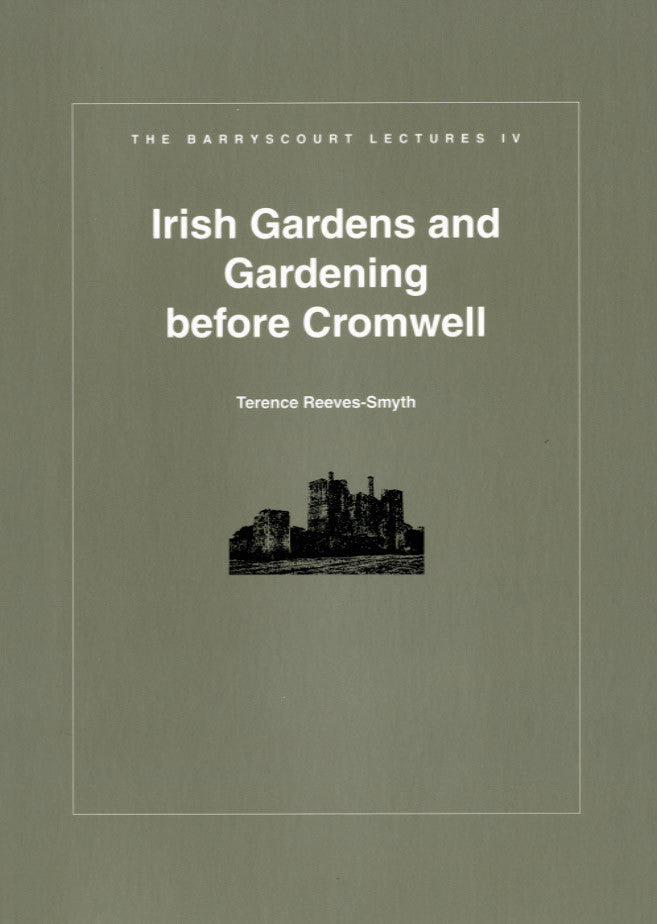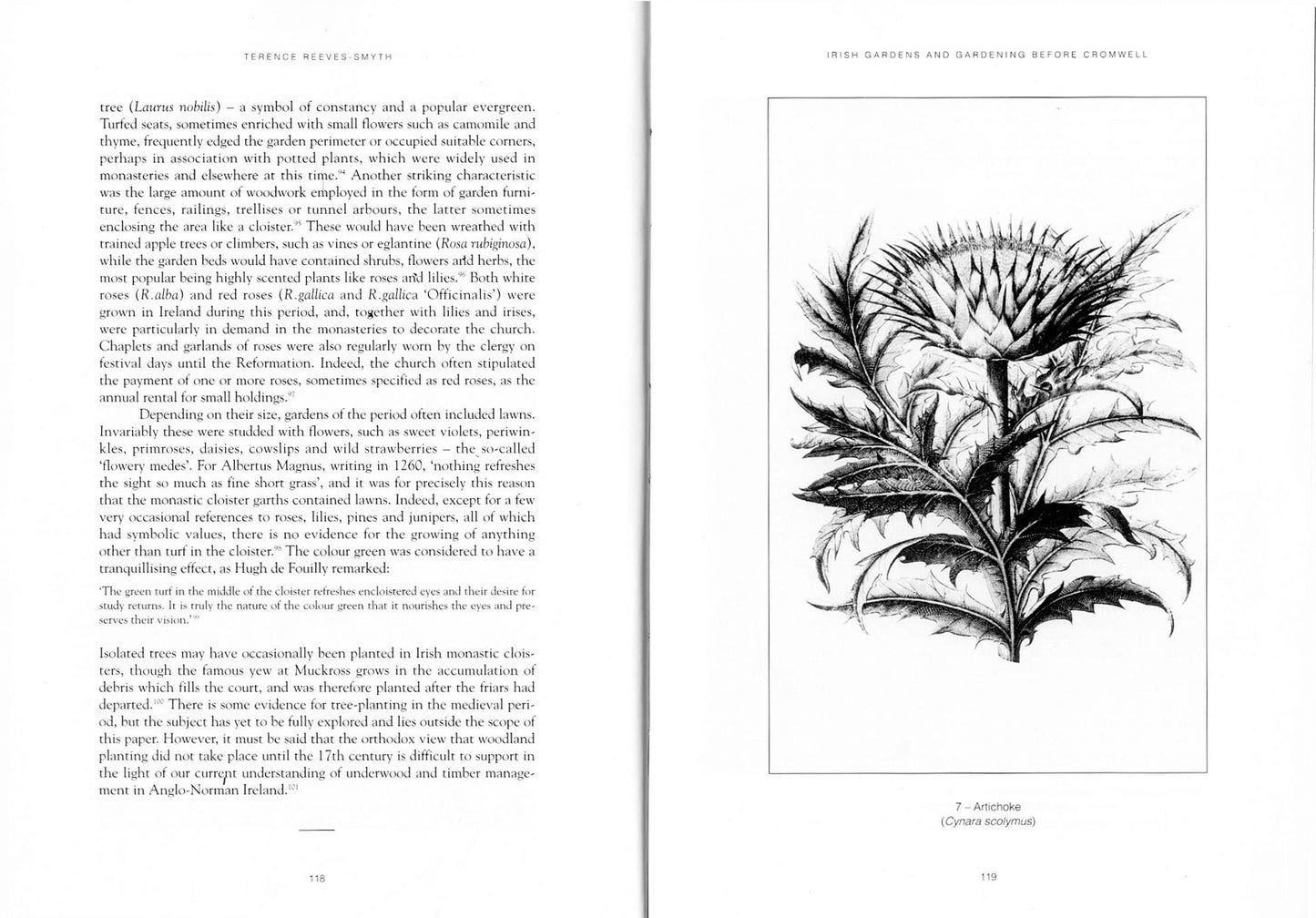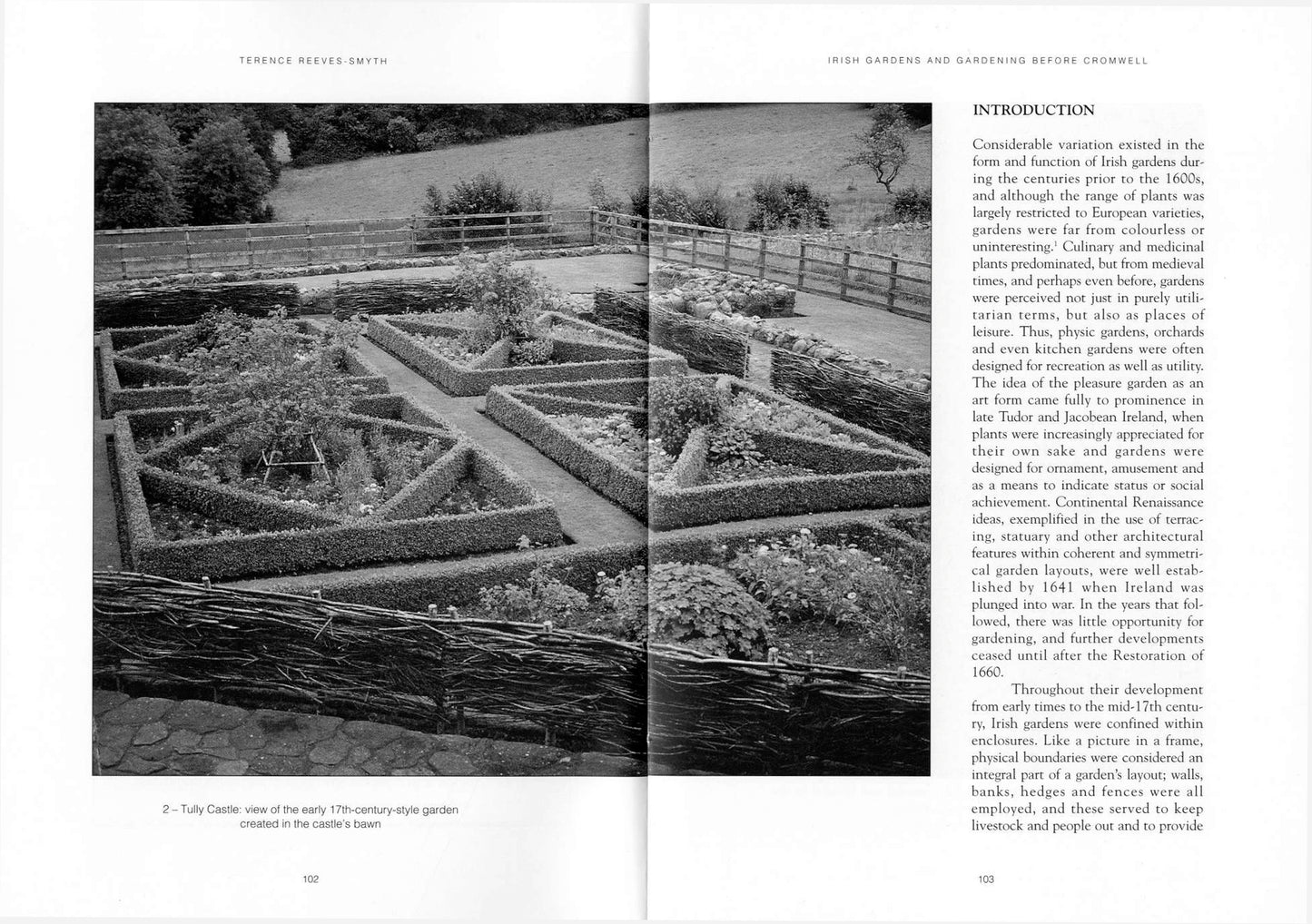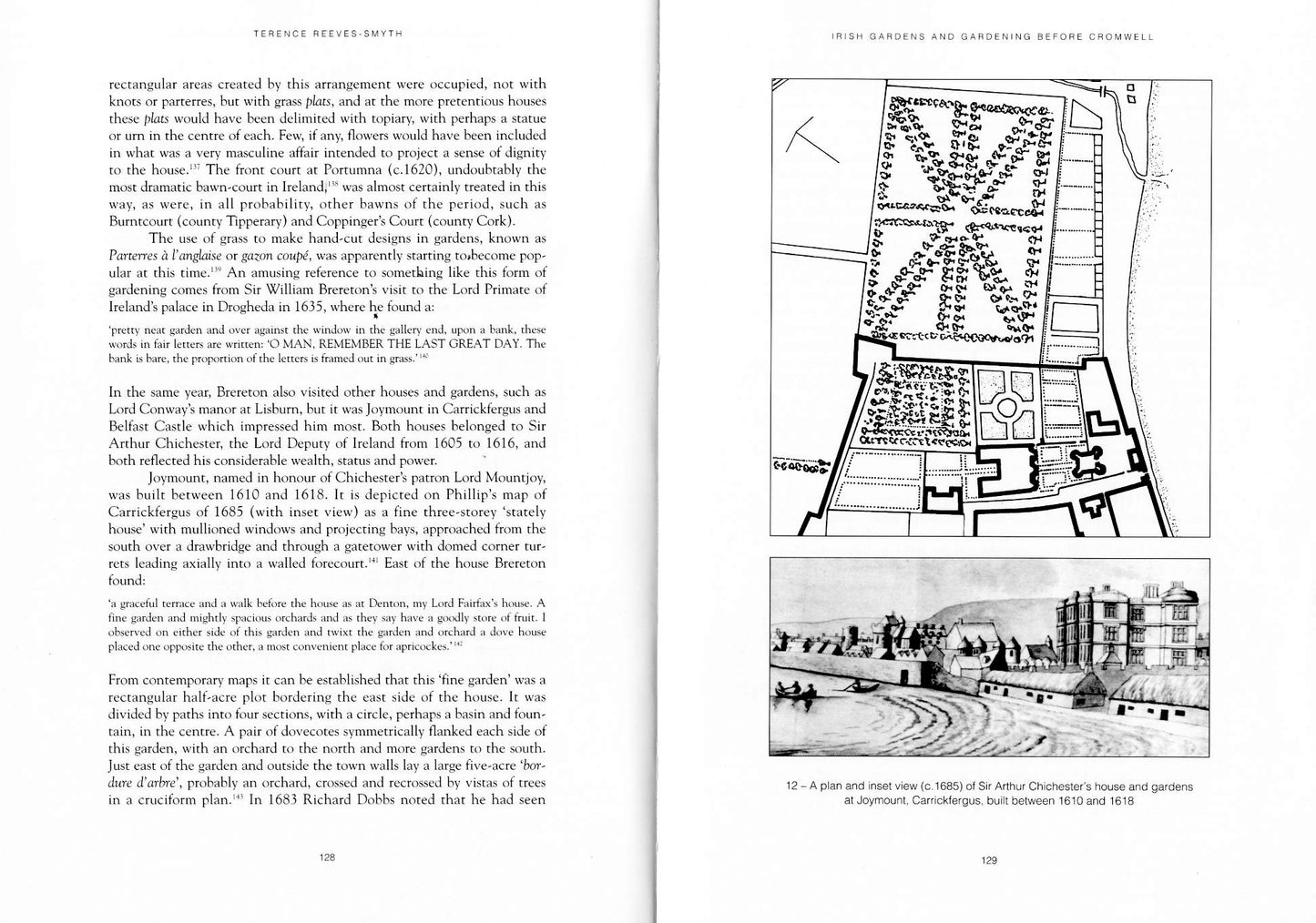Barryscourt Trust / Gandon Editions
Barryscourt Lectures 4 — IRISH GARDENS AND GARDENING BEFORE CROMWELL
Barryscourt Lectures 4 — IRISH GARDENS AND GARDENING BEFORE CROMWELL
Couldn't load pickup availability
Share
by Terence Reeves-Smyth
ISBN 978 0946641 963 48pp (pb) 24x17cm 13 illus
This book explores the development of gardens in Ireland from prehistoric times to the Elizabethan and and early Stuart period. Considerable variation existed in the form and function of Irish gardens during the centuries prior to the 1600s, and although the range of plants was largely restricted to European varieties, gardens were far from colourless or uninteresting. Culinary and medicinal plants predominated, but from medieval times, and perhaps even before, gardens were perceived not just in purely utilitarian terms, but also as places of leisure. Thus, physic gardens, orchards and even kitchen gardens were often designed for recreation as well as utility. This is an absorbing and colourful account by a leading authority in the field.
This is an absolutely wonderful book, and should be in every school library and given for Christmas to every gardener. — Books Ireland
A welcome addition to the Barryscourt series ... very informative overall and well presented ... The production and printing maintain the high standard of the previous volumes in this series.
— Journal of the Cork Historical and Archaeological Society
It makes interesting reading for all students of Irish garden history, and includes many gems. — Jane Powers, Irish Times
Illustrated, with copious footnotes, it shows that Irish gardens were far from colourless and uninteresting before the 17th century. — Irish Garden magazine
_____
EXTRACT
"Physic gardens were often the location of beehives – a standard feature of monasteries and manors alike. Bees have been ‘cultivated’ in Ireland from pre-Christian times and have had a long association with gardening. They pollinated herbs and flowers, produced honey – used for sweetening, for mead and medication – and also beeswax for candles, writing tablets, seals and adhesives. Loghives appear to have been used by the Early Christian monks who were noted beekeepers, while wickerwork skeps were in general use by the Norman period; skeps of coiled straw seem not to have become widely employed in Ireland until the Tudor period. There are references to ‘bee-towers’ or ‘honey-towers’ for keeping hives in medieval Ireland, but it seems likely that most hives were kept in open-fronted shelters – a practice that continued until the early 19th century. Beehives were sometimes located in the orchard, as were dovecotes, which are often mentioned in medieval accounts.
Most orchards were probably regularly laid out in a grid pattern, and could be extensive in size; in 1303 the manor of Santry, county Dublin, had two hundred apple trees and one hundred pear trees, implying an area of at least three acres, while the manor of Old Ross in Wexford was producing nine bushels of apples for sale in the 1280s. Many of the monasteries could boast several orchards: at St Thomas’s Abbey (Dublin) there were eight, Greatconnell (Kildare) had six, and Inistioge (Kilkenny) had five. Some of these may have been ‘cemetery orchards’ – an age-old association that is depicted on the St Gall plan as rows of trees flanking the monks’ graves.
Undoubtably, apples predominated in Irish orchards, most likely including varieties of Costards, Pearmains and Bitter-sweets, the latter being for cider. The most widely appreciated pears of the period included Wardens, Sorells, Caleols and Gold Knopes, all of which were usually cooked and put into preserves, puddings and pies. Dessert pears may have been comparatively rare, though there is one apparent reference to a Bon Chrétien in the prior’s garden of St John’s Priory, Kilkenny. Plums and cherries were also grown, and other fruits might have included filberts, walnuts, medlars and perhaps even figs in some sheltered places. The favourable climatic conditions that existed prior to the 14th century would certainly have suited figs, and, indeed, grave-vines, for which there is some evidence in the form of both vineyards and winepresses, despite the fact that Ireland was known to be importing a great deal of wine from France during this period."
— Terence Reeves-Smyth








